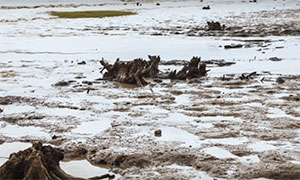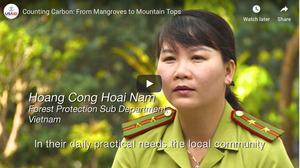|
The MAP News
465th Edition Mar 30, 2019 |
|
FEATURE Restoring The Natural Mangrove Forest 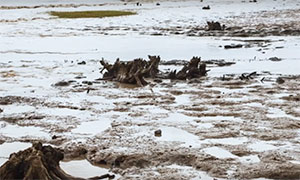 USA - Coastal communities are intrinsically connected to the sea. Their lives depend on it. A key to happiness and life in tropical regions is a healthy mangrove forest. We are now recognizing that a world without the rainforests by the sea, wouldn’t just mean a dismal scenario for coastal communities, but would ultimately affect us all, and our planet. With the ability to store vast amounts of carbon, mangrove forests are key to tackling climate change, but they are under threat worldwide. The film takes us to the Andaman Coast in Southern Thailand, and explores the importance of mangrove forests. Much like the rest of Thailand, huge areas of mangroves were cut down during the 80s and 90s to make way for shrimp farms. And as mangrove destruction continues globally at nearly 1% annually, attempts are being made to restore these carbon-rich forests. We are introduced to Mangrove Action Project who have a unique approach to restoring mangrove forests; encouraging natural regeneration (ecological mangrove restoration), and collaborating with coastal communities (community-based restoration). The results show that these ideas and methods would have a great impact on any restoration project, and need to be implemented globally. VIEW VIDEO AFRICA ‘Seawater is coming into our farms and killing the plants’  TANZANIA - The water from the wells in Kisakasaka used to be so salty that it would turn people’s teeth yellow. Children, no matter how thirsty, would often refuse to drink. But with no other water source in this farming village near Zanzibar’s capital Stone Town, around 1,000 residents were forced to drink increasingly salty water that gave them headaches and nausea. “It was very difficult at the time and the children complained a lot about the water, but they had to drink it because there was no other option,” said Pili Issa Moussa, a mother-of-five and local resident. People’s problems were compounded when more and more crops started failing and animals started getting diseases as the seawater crept further inland and spoiled or washed away fertile soil. “There are some areas where even the coconut trees started to die,” said community leader Khatib Ali. The villagers formed a non-governmental organization to fight the effects of climate change and save their village from being battered by the winds and seawater advancing unimpeded due to the lack of tree barriers. READ MORE ASIA Rampal coal power plant, Bangladesh, an ethical perspective  INDIA - While the entire world is moving towards searching for the alternatives, especially renewable energy; Bangladesh India Friendship Power Company Ltd, is going to construct a 1,320 MW coal fired power plant near the Sundarbans in Rampal (located only 14 km apart from the world’s largest mangrove forest). The company is a joint venture between the state-run Bangladesh Power Development Board (BPDB), and India’s National Thermal Power Corporation (NTPC). While the government is electroplating any possible damage to the Sundarbans, a UNESCO world heritage site, the National Committee to Protect Oil, Gas, Mineral Resources, Power and Ports; some left-leaning organizations as well as environmentalists have been opposing that there will have numerous adverse impact on the pristine forest. READ MORE Mangroves destruction in Maldives-islands’ biggest ecocide  MALDIVES - The decision to build a domestic airport in Kulhudhuffushi wetland and mangroves and the subsequent reclamation of a significant part of the mangroves is one of the biggest environmental ecocides the Maldives has seen in recent times. The destruction of the mangrove ecosystem commenced in October 2017, during President Yameen Abdul Gayoom’s administration despite a public outcry against this. The project has attracted criticism and attention not only from locals, civil society organizations and politicians based in the Maldives, but also from international organizations, foreign diplomats, international media and scientific and research-based organizations from abroad as well. Kulhdhuffushi Kulhi wetland and mangroves along with a belt of coastal vegetation running along the eastern edge of the island are the last remaining green space in this rapidly urbanizing island. READ MORE Saving Mumbai's natural mangrove buffer against rising tides 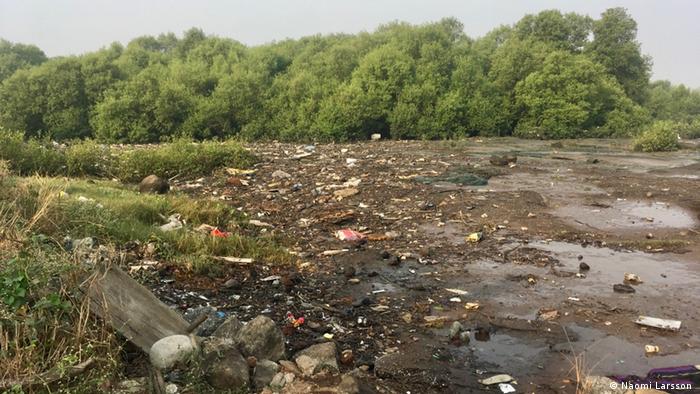 INDIA - Crows pick at debris washed up on a shore in Mumbai. It's a humid day, and through thick smog, the outlines of gray buildings are just about visible on the other side of the inlet. In this part of Mumbai's mangrove forest, the land is barren, dotted with pools of dirty water and plastic waste. "There's so much dirtiness," says 19-year-old college student Kajal Jadhab, as she looks around at the trash. Scenes like this are common along Mumbai's shoreline. They were once covered in mangroves — coastal trees that act as vital flood defenses and carbon storage systems — but the forests have severely degraded, destroyed by encroaching housing developments and waste. Mumbai, India's second city, has lost around 40 percent of its mangrove forest cover in recent decades. Desolate areas like this are left behind, snapshots of the country's troubled relationship with the environment. READ MORE North Jakarta sees growth of 32,000 mangrove trees 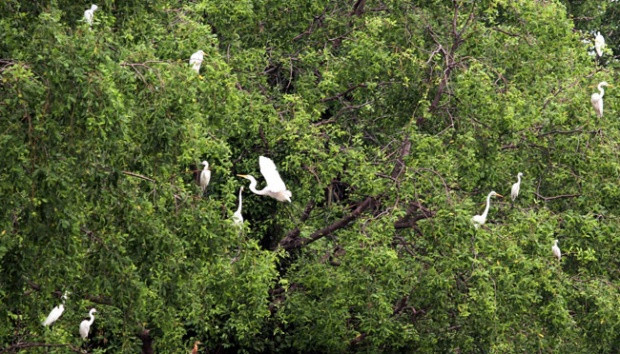 INDONESIA - North Jakarta has seen the growth of 32,000 trees since they were planted 10 years ago at the Ecomarine Mangrove Forest. The trees were planted on 1.8 hectares of land that was initially barren before it was converted into a forest on the edge of the Kali Adem Estuary in Muara Angke. “From 2008 until now, 32,000 mangrove trees have grown here,” said Muara Angke Mangrove Community head Muhammad Said as quoted by tempo.co on Wednesday. The mangrove trees include the pidada (Sonneratia), api-api (Avicennia), nipa palm (Nypa fruticans), and red mangrove (Rhizophora), Said explained. The trees were planted to recover the mangrove forest ecosystem along Jakarta's northern coast, which is threatened by land conversion. “There were mangroves, but in the 1990s they were wiped out due to the impact of development. In 2008, we established a mangrove community and started mangrove planting for the sake of caring for society and the environment,” he said. READ MORE Sabah villagers struggle to save dwindling mangroves  MALAYSIA – At the Telaga river in Pitas, in the northern region of Sabah, villagers are fighting to save a once thriving mangrove forest which they say is teetering on the brink of destruction thanks to a shrimp park project in the area. A total of 2,300 acres of mangrove forest along the river has already been converted into shrimp ponds, with a further 1,000 acres earmarked for the park. The project came to a halt following protests mounted by the villagers and backed by NGOs. Mastupang Somoi, a farmer and fishermen who led the protests, said the initial damage to the mangrove forest was done in 2015. “The heavy machines came one night on a barge. They levelled the mangrove trees and dug a deep trench in the middle of the mangrove colony, cutting the brackish water supply to the trees. READ MORE AMERICAS Northward march of mangroves impacts fishing, flooding, carbon  USA - Walking along a wooden path winding through Nease Beachfront Park, Danny Lippi pointed to coastal trees sprouting from the shrubbery around him. The exotic species were brought here by warming temperatures — bringing business opportunities for the local arborist. “All of these are mangroves,” Lippi said, surrounded by the young perennial plants, blooming with hues of green and golden yellows. “You can actually see that line where the upland vegetation just stops.” Demand for Lippi’s mangrove trimming service has been growing as the trees have been accumulating northward, starting to block coastal views from Ormond Beach to Palm Coast. Their northernmost limit in the U.S. sits about 70 miles from St. Augustine on Amelia Island, and it continues to shift. Ranges of mangroves have naturally waxed and waned over the years, influenced by the weather, but with climate change has come a crucial reduction in crop- and tree-killing freeze events. The last freeze strong enough to wipe out mangroves took place in 1989. This decline in the number of frosts, coupled with intensifying storms spreading seed-like propagules, is causing the trees to push poleward. READ MORE OCEANA Why we should save the last scraps of nature  AUSTRALIA - Scientific thinking changes as new evidence comes to light. One vital new insight is the importance of saving even tiny, isolated remnants of native vegetation. Decades of research on fragmented habitats has shown that small, isolated patches of habitat are often ecologically depauperate — deficient in top predators and specialized old-growth species, and suffering from a wide variety of ecological woes. This research correctly shows the vital importance of protecting Earth’s vanishing wilderness areas. But such studies have also convinced some people that very small, isolated patches of native vegetation are nearly worthless. In many places, these tiny remnants are being bulldozed and razed to the ground. READ MORE GLOBAL Educating FAO: an urgent need! 2019 – International Day of Forests 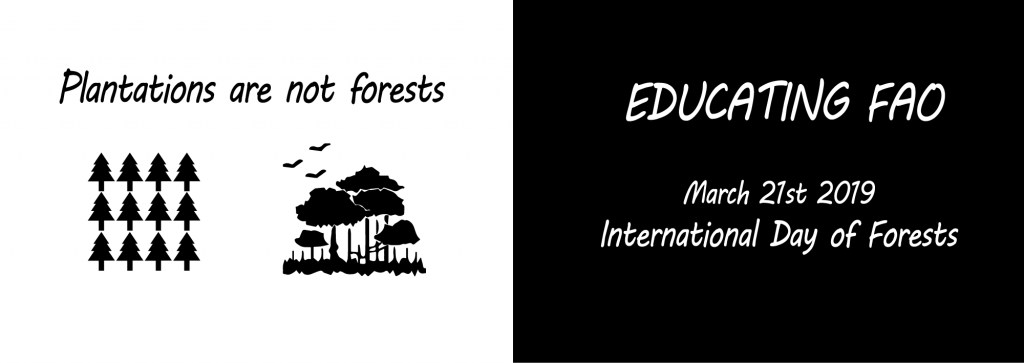 GOLOBAL - In 2012, the UN General Assembly proclaimed March 21st the International Day of Forests. The aim: raising awareness about the importance of forests. The UN Food and Agriculture Organisation (FAO), the organizer of the Day, chose Forests and Education as the theme for 2019 and underlines the importance of investing in forest education. But what does FAO mean by “forest education”? Based on what World Rainforest Movement has learnt from communities, FAO ought to reflect on –at least- the following 10 points: 1. Plantations are NOT forests, FAO’s forest definition considers forests to be basically just “a bunch of trees”. This ignores the vital interconnections with other life forms. With this definition, FAO has actively promoted the establishment of many millions of hectares of industrial tree plantations, of mainly alien species, especially in the global South. 2. Forests cannot be reduced to forestry: The terms “Forestry” and “Forests” may sound similar and are sometimes used interchangeably, but they refer to very different things. Forestry reduces forests to their potential for wood production. Hence, FAO argues that you can “plant” forests. The reality is that it is only possible to plant trees. When FAO created a “Forestry department” (and not a Forest department) it shows that the “forestry” concept has priority in its policies. READ MORE LAST WORD   Dear MAP Friends It is with sadness that I let you know that I recently lost a true friend, who has been at my side helping to edit the MAP News for more than 12 years now. Chuy was a fan of MAP, my Editor in Chief, and a faithful friend to those who work to make our planet a better place. He did just that, and he will be missed. He would have been 17 years old in Sept. Sincerely, Sam Nugent MAP News Editor Back to Top |
|
Mangrove Action ProjectClick here to view past newsletters |
|
Search News Archive
Friday, March 29, 2019
MAP NEWS Issue 465, March 30, 2019
Saturday, March 16, 2019
MAP News Issue 464 - March 16, 2019
|
The MAP News
464th Edition Mar 16, 2019 |
|
FEATURE International group to help restore Kulhudhuffushi mangrove 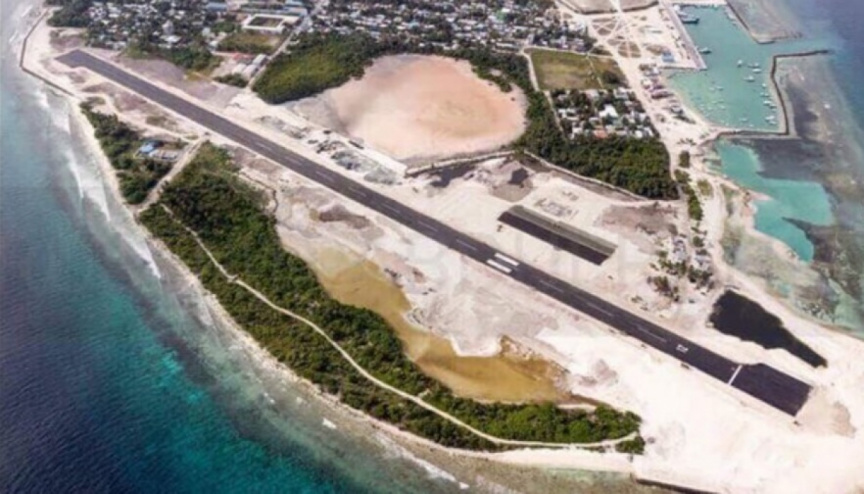 MALDIVES - The Maldives government has accepted an offer from an environmental group to help restore and revive the Kulhudhuffushi mangroves after a controversial airport project destroyed a large part of the unique ecosystem. Environment Minister Dr Hussain Rasheed Hassan accepted the offer from Mangrove Action Project, a US-based nonprofit specialising in conservation and restoration of mangroves, the environment ministry tweeted. The Kulhudhuffushi mangroves were reclaimed in late 2017 to make way for an airport despite a public outcry and warnings of lasting and irreversible damage from an Environment Impact Assessment report. A 2013 campaign pledge of former president Abdulla Yameen for the northern population hub, the project was rushed to completion ahead of last September’s presidential polls. Claims made by relocated residents were disregarded and mitigation measures advised by the assessment report to protect the remaining area were ignored. Activists and environmental NGOs have since protested the lack of action to preserve the remaining wetlands. READ MORE AFRICA The fiddlers influencing mangrove ecosystems  SAUDI ARABIA - The types of bacteria present in and around mangrove fiddler crab burrows in three different geographic locations were compared by KAUST researchers. They found that the crabs' burrowing activity changed the sediment in a way that attracted different types of bacteria across the three locations: however, the bacteria performed similar functions, such as aerobic respiration, and potential ecological services, such as turnover of organic matter. "Mangrove crabs act like ecosystem engineers: Their burrows create radial, halo-like microbiological and geochemical modifications to the surrounding sediment compared with soil that has been left undisturbed," says Jenny Booth, the first author of the study. "This effect was similar in all three locations, with the burrow-dwelling bacteria being taxonomically different but functionally similar," she adds. Microorganisms play important roles in driving global biochemical cycles, such as the nitrogen cycle, in which nitrogen--a building block of proteins and nucleic acids-- circulates among the earth, the atmosphere and marine ecosystems. READ MORE Improving how we work for – and with – indigenous and local women in their communities 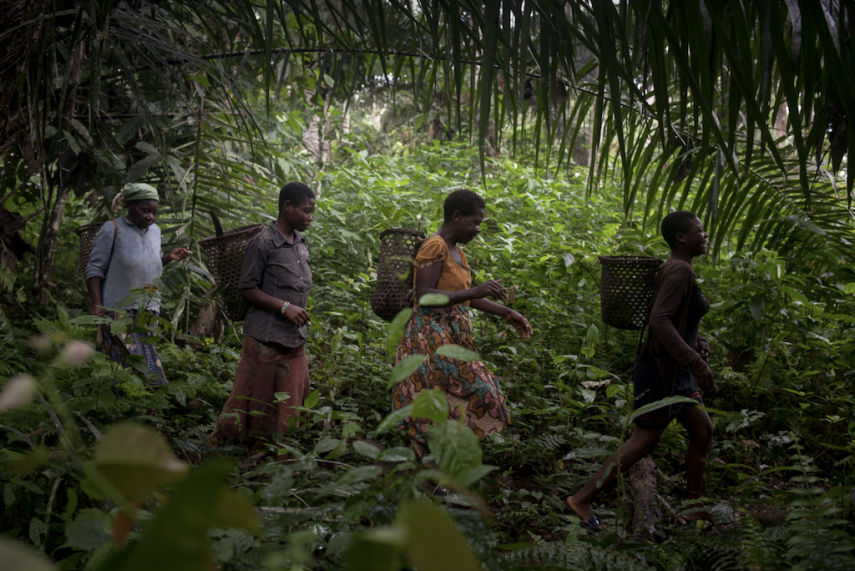 CONGO - As a human rights organisation, gender justice is a fundamental principle of our work, and we have long been conscious of, and sought to address, the barriers to effective participation in decision-making by women, as well as the other human rights violations they may face on account of their gender. This blog summarises some of the experiences and learnings from our fieldwork in the Congo Basin over the past 5 years, on how to improve women’s effective participation at the community level. Some of these points may be new, though many reflect recommendations made by other actors working in this field. However, we feel that it’s helpful to remind ourselves of how important all of these factors can be in the pursuit of gender justice. Holding separate meetings with women is a well-known strategy for improving women’s participation, but it’s importance really cannot be overstated – particularly in communities where women haven’t had a lot of specific experience in the past. It has regularly been the case that we have had only one or two limited comments from women when mixed meetings were held, but a huge amount to say when they were on their own. READ MORE ASIA Ecosystem-based approach for planning research 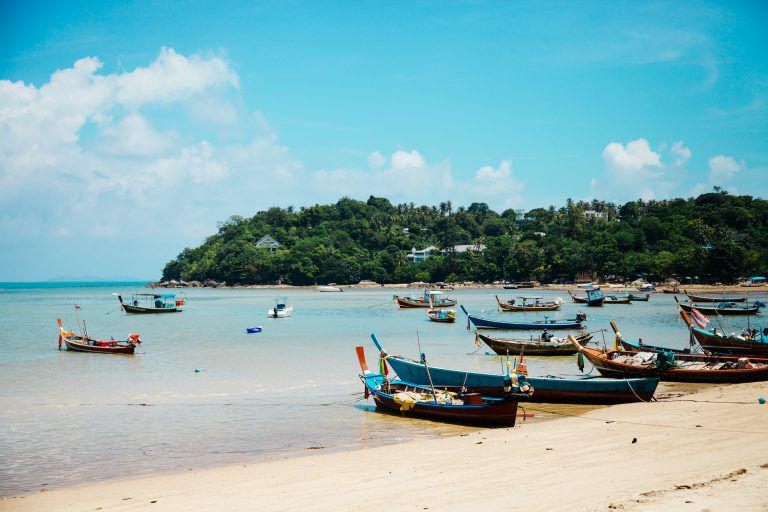 Thailand - Coastal ecosystems contribute significantly to socio-economic development in the southeast Asia region. The emerging question is how to achieve sustainable development through innovative thinking, smart planning and better insights derived from an ecosystem-based approach (EbA). Based on experience gained while implementing the Sustainable Management and Governance of Coastal Ecosystems (ENGAGE) project funded by the Asia-Pacific Network for Global Change Research (APN), we contribute to addressing this question by proposing an emerging EbA as a complementary concept for implementing Integrated Coastal Zone Management (ICZM). A strong emphasis on strengthening the capacity of development actors and local communities remains pertinent in formulating this eco-centric policy for resource governance. This synthesis is described in three sections presenting an overview of EbA and ICZM in selected countries in the region. The first section reflects the review of coastal management frameworks and institutions, with a focus on policy strengths and gaps in the integration of EbA, particularly in the context of climate change adaptation. The second section explains different procedures adopted or proposed in the region for sustainable development of coastal ecosystems. The third section demonstrates how regional-scale initiatives like ENGAGE can facilitate the exchange of data, information, and knowledge, and stimulate cooperation for realizing the 2030 Agenda for Transformation, and the coastal zone-related SDGs and targets. READ MORE Mangrove ecotourism helping to reduce the risk of natural disaster in Vietnam delta VIETNAM - “Being an ecotourism host brings us so much joy – it’s fun to have visitors!” said Tran Thi Soi after serving us homemade dark purple giác berry juice in her family’s isolated home stay, nestled in the mangroves of Mui Ca Mau National Park (MCMNP). Tran and her family are something new in this part of the Vietnam Delta: ecotourism hosts. Her family is one of five taking part in an ecotourism pilot project supported by WWF to create sustainable livelihoods in the area that benefit both people and the park. Before her family became ecotourism hosts, few visitors ever came to her home in the park's buffer zone. It takes more than two hours by car and then by boat through a maze of mangroves to reach her home perched on a narrow strip of land between canals in the wetland forest. Any visitors that did make the trek only came for a quick trip to see the End Point tower, which marks the southernmost tip of Vietnam. But now those tourists stay to experience life in the mangroves and Tran couldn’t be happier. And it gives the people of Mui Ca Mau another incentive to conserve the mangroves, which are a vital protection for the communities themselves. The mangroves form a buffer between the land, sea and Mekong River, helping to maintain this patch of the Delta and shielding communities against natural disasters. READ MORE Water way to go  THAILAND - There was once a time in Thailand when the population was small and the waters were full of life. Today, the country has nearly 70 million people, but the number of marine creatures is decreasing all the time. In the past, people had respect for the seas, lakes, rivers and their inhabitants. We are not so conscientious anymore. There isn't enough concern about what our activities could mean for the future. There are many lessons that can be learned as a consequence of the destruction of mangrove, wetland and napa palm forests, all home to an abundance of life. With the depletion of these forests, animal populations collapse, some even disappear. From time to time, campaigns and movements are initiated to try to protect these forests and raise awareness of their importance to the creatures who live there. But these conservation projects are fighting an uphill battle against the ongoing destruction. There have been some successes. There is a mangrove forest in Satun covering many neighbourhoods that is protected s a national seaside park. READ MORE AMERICA Human Rights abuses can no longer be tolerated in conserving the world’s forests 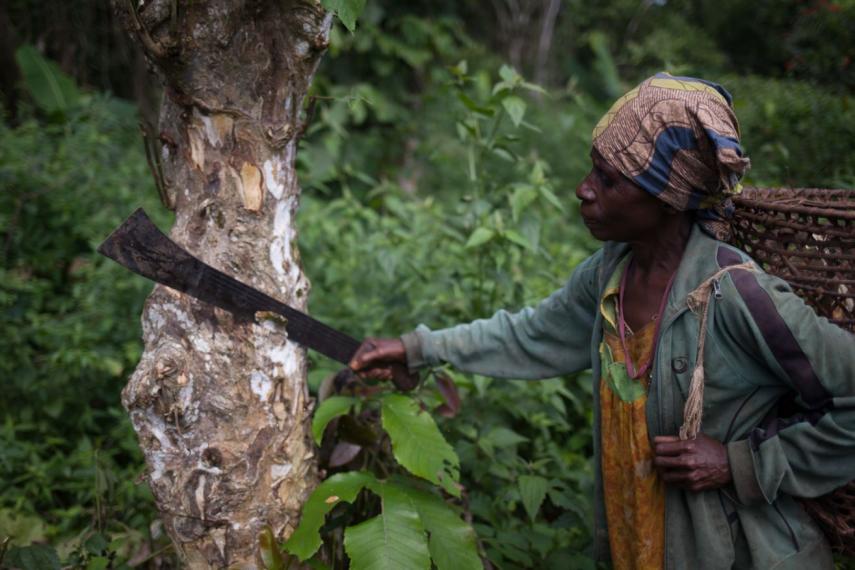 BRAZIL - Recent Buzzfeed reports about WWF hiring ‘paramilitary forces’ to fight poaching and the associated human rights abuses of local peoples show the urgent need for a shift in current conservation models. Forest Peoples Programme Director, James Whitehead today said:“To protect the world’s forests and wildlife while respecting the rights of those who have lived for generations in these areas we need a fundamental change in the approach taken to conservation globally.” “The National Park model of excluding indigenous peoples and local communities is fundamentally flawed – we have witnessed countless examples of human rights abuses in conservation projects, stretching back to our formation in the 1990s.” Yet conservation and human rights are not intrinsically opposed. There is mounting evidence that conservation based on respect for the rights of traditional owners of the lands is more effective than exclusionary protected areas. For example, in the Amazon deforestation is between 2 and 6 times lower in areas where indigenous people have land rights. READ MORE OCEANA International expertise sought to restore Kulhudhuffushi mangrove  MALDIVES - Ministry of Environment has made the decision to seek international expertise to restore life to the H. Dh. Kulhudhuffushi mangrove which was damaged in the land reclamation project for construction of an airport on the island. State Minister of Environment, Abdulla Naseer said the land reclamation had resulted in drastic changes to the natural properties of the large mangrove. He said that the mangrove, as a result of the land reclamation project, is now cut off from the sea. “Many have been urging us to restore it. We need to assess possible options to do this. Our objective is to identify the resources necessary and the methods by which we can do this. We are currently planning on seeking international expertise,” said Abdulla Naseer. Environmental Protection Agency (EPA) confirms Minister of Environment, Dr. Hussain Rasheed has now accepted support from the international network, Mangrove Action Project (MAP) to save the Kulhudhuffushi mangrove. MAP has presence in multiple countries and uses Community-Based Ecological Mangrove Restoration (CBEMR) technique to restore and save dying mangroves. READ MORE GLOBAL Degradation of Marine Ecosystems 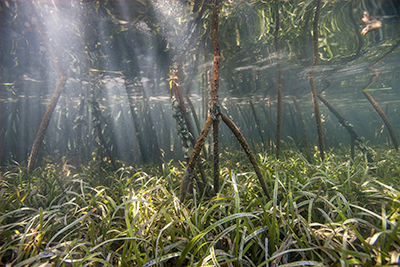 Global – The extent of the benefits that communities and economies derive from the ocean depends on the overall health of the ocean. While some components of the marine ecosystem and the services they provide are more visible, such as fisheries, others are hidden below the surface. In this chapter, we conduct a closer examination of mangroves, seagrass meadows and coral reefs, among the most undervalued elements of the marine environment. Their degradation and the resulting adverse impact on marine life have been well documented but only in recent years has there been a more widespread recognition of their value. “There’s limited understanding of the linkages among the three,” says Dominic Wodehouse, adviser at the Mangrove Action Project. “The system works much better if all three are healthy.” READ MORE UN declares 2021 to 2030 ‘decade on ecosystem restoration’ http://www.mangrovealliance.org/wp-content/uploads/2017/07/Small_WW1114624.jpg GLOBALL - On March 1 the United Nations General Assembly approved a massive global target for the next decade: restore the world’s deforested and degraded ecosystems. Worldwide there are more than 2 billion hectares that could potentially be restored. This could support and improve the wellbeing of 3.2 billion people. Priority ecosystems include wetlands and aquatic ecosystems like mangroves, which are disappearing faster than terrestrial ecosystems. This “Decade on Ecosystem Restoration” emphasizes scaling-up restoration activities to increase the larger impact on severely degraded areas. The goal has the potential to raise political will and unlock funding for restoration work in many countries, while increasing awareness within the public about the importance of restoration in combating climate change, biodiversity loss, and human wellbeing and livelihoods. It builds on comittments in existing goals, like the Bonn Challenge, which aims to restore 350 million hectares of ecosystems by 2030. Implementation of the Decade will be led by UN Environment and the Food and Agriculture Organization of the UN. READ MORE Save the Date  GLOBAL - The 9th year WCFF anniversary is October 17-27, 2019 in New York, NY. Over 100 films, representing more than 35 nations. Filmmakers, scientists, wildlife conservationists in attendance from across the globe.Ten days of film screenings, panel discussions, receptions, field trips, networking and more. To submit a film, participate in a panel discussion or serve on the planning committee contact: info@wcff.org LAST WORD Dear Petu, Thanks for your interest in our efforts to collaborate with the government of the Maldives to help find ways to conserve and restore the mangroves at Kulhudhuffushi that were so badly affected by the airport development. At this point MAP in partnership with members of the international Mangrove Specialist Group (MSG), a sub-group of IUCN devoted to mangrove wetlands, are planning to send a team of experts to visit the site where the remaining mangroves are struggling for survival due to blockage of their sustaining hydrology, which includes both the tidal flows and fresh water inputs from streams and rains. We know that this hydrology has been negatively impacted, which if not corrected could lead to the demise of the remaining mangroves. Therefore, as the Minister of the Environment, Dr. Hassan, and I agreed, we must try to find a way forward to revive the hydrology in part or whole to rehabilitate the still existing mangrove area. MAP as well as the MSG see the need to conserve and restore our planet's mangroves as an imperative for so many vital reasons. (Please see the attached information I recently sent Dr. Hassan.) One immense issue we all need to collectively confront today is climate change, which is causing melting ice caps and glaciers furthering rising sea levels, coastal erosion, droughts, flooding and more frequent and virulent storms. While mangroves sequester and store up to five times more carbon than tropical rain forests, over half the world's mangroves have been destroyed and degraded, whereby important ecological services and benefits have been lost or greatly diminished resulting in world fisheries declines as well as great loss in biodiversity. This tragedy should and still can be avoided by more careful and long-range planning by all coastal resource managers and conservation interests. But this planning must start now, not after the damage has been done and more mangroves have been lost.This is the larger picture, and MAP, the MSG and other global networks such as the Global Mangrove Alliance are working towards halting further mangrove loss and restoring mangroves where we can. The Maldives, though containing a small percentage of the world's mangroves contains some unique and threatened mangrove species, which if lost may result in their extinction. As well, the Maldives is a place we can build up needed global awareness of their importance, and set a much needed example by finding ways we can work in a collaborative, positive fashion with government, local communities, local non-government organizations (NGOs), scientists and business interests to develop a more holistic and sustaining approach to mangrove conservation, which must be interwoven integrally with an overall coastal management plan, if it is to succeed. We are still working on a time to visit, but are now considering bringing the team of mangrove experts to the Maldives around mid-April, but must work out our plans with the Minister Dr. Hassan. To learn more about MAP, please visit our website: www.mangroveactionproject.org I hope this is helpful. If you wish to talk via Skype, please let me know. Or send me your What's Ap number. For the Mangroves and Mangrove Communities, Alfredo Quarto, Co-founder and Program & Policy Director Mangrove Action Project Back to Top |
|
Mangrove Action ProjectClick here to view past newsletters |
|
-
The community of adults and youth in Cayman Islands has come together recently to release a series of educational videos. Each is geared to...
-
By Alfredo Quarto, Program & Policy Director Co-founder, MAP There is a rather urgent situation concerning the bio-invasion of the Son...
-
By: Isabel Robinson, MAP Volunteer Intern Some months ago I decided to come to Thailand and do an internship in mangrove conservation, ...
MAP News Issue #596 = April 20, 2024
ENTRIES NOW OPEN! Mangrove Photography Awards 2024 10 Years Celebrating Mangroves GLOBAL - MAP has launched our 10th Mangrove Photograp...



